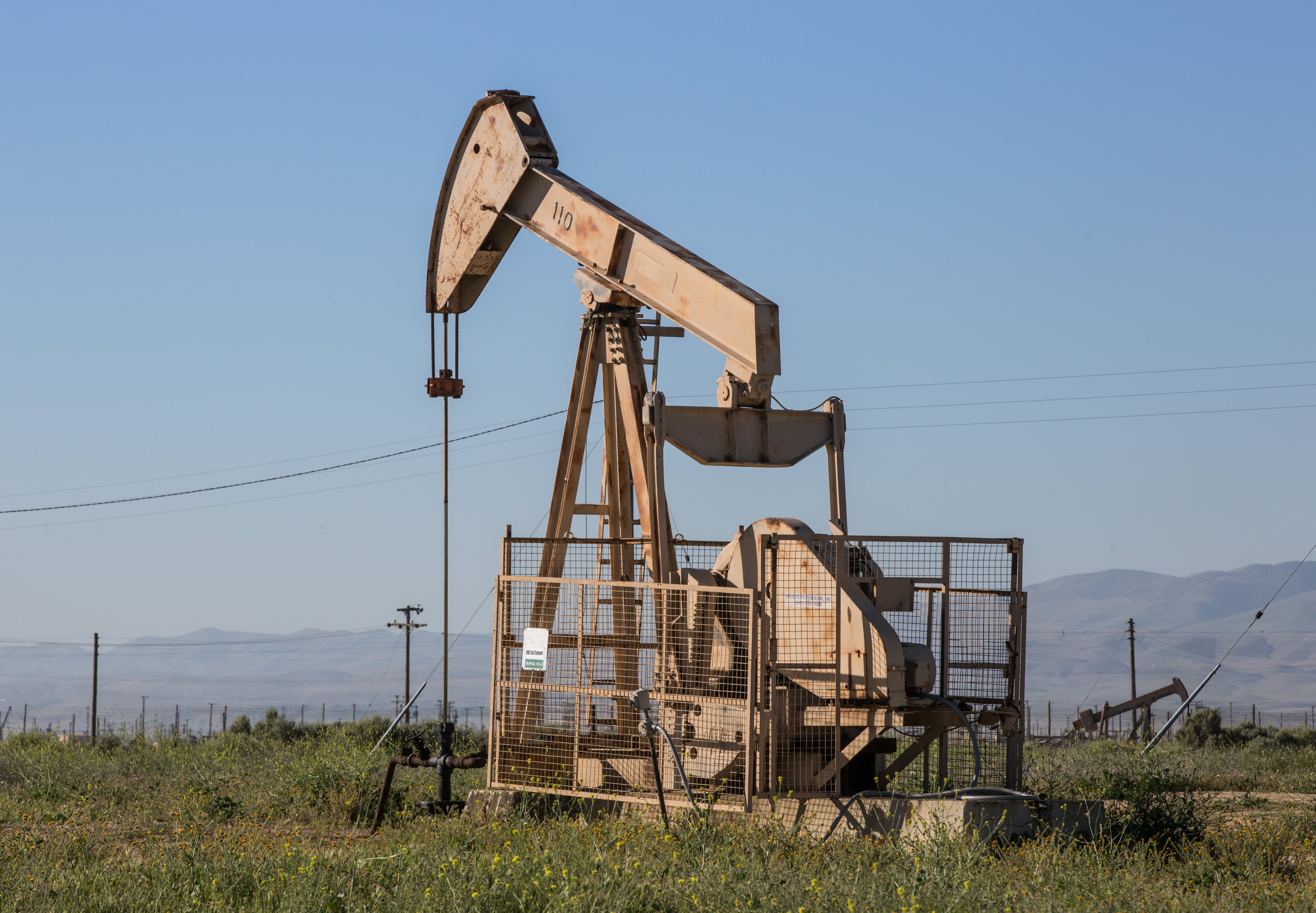Oil pipelines, pumping rigs, and electrical transmission lines dot the landscape along California’s “Petroleum Highway” (Highway 33) running along the northwestern side of the San Joaquin Valley on April 24, 2020, near McKittrick, California.
George Rose | Getty Images News | Getty Images
Despite a grim demand outlook for energy as the coronavirus pandemic continues to weigh down the global economy, Goldman Sachs remains bullish on both oil and gas prices — regardless of the U.S. presidential election outcome in November.
“We do not expect the upcoming U.S. elections to derail our bullish forecasts for oil and gas prices, with a Blue Wave likely to be in fact a positive catalyst,” the bank’s commodities team wrote in a research note Sunday.
“Headwinds to U.S. oil and gas production would rise further under a Joe Biden administration, even if the candidate has struck a centrist tone,” the note said.
Goldman sees improved demand in 2021 and tighter supply for both gas and shale oil superseding election results, though a Biden administration could provide a further boost to oil prices by making production — especially for shale — more expensive and more regulated.
If elected, Biden seeks to achieve a carbon pollution-free energy sector by 2035, and analysts expect his administration to impose regulations that would increase shale production costs with things like taxes and methane restrictions, which the Donald Trump administration had eased. Goldman estimates such taxes could increase costs by as much as $5 per barrel. And expected dollar weakness under Biden also provides upside risk to prices.
While Biden has said that fracking would not be “on the chopping block,” a Democratic administration could also move to reduce the scope for shale exploration with restrictions on federal land drilling and approvals for pipelines. The former vice president is currently leading incumbent Trump by double digits in major national polls.
If Trump is re-elected, while pro-oil and gas policies would remain in place, “its impact would likely remain modest at best,” Goldman’s analysts wrote, “given the more powerful shift in investor focus to incorporate ESG metrics and the associated corporate capex re-allocation away from fossil fuels.”
A return of the Iranian nuclear deal?
Even in the event of a Biden administration reinstating the Iran nuclear deal and removing sanctions allowing OPEC’s second-largest oil producer to return to global markets, “shale supply headwinds” would offset increased Iranian exports, the note argued. If an Iran deal helps bring oil prices further down, Goldman says, shale and associated gas production won’t be profitable, putting a squeeze on their supply.
The U.S. Energy Information Administration forecasts that U.S. natural gas production will continue to decline through 2020.
Still, a return to the deal faces numerous obstacles — not least acquiescence from Iran — and may not be an immediate priority for a Biden administration.
Shale production costs in the spotlight
The bank expects tightness in U.S. oil and gas supply even as rig count in the shale-rich Permian Basin starts to creep upward for the first time since waves of closures began in March when the oil price crashed amid the virus shutdowns and a price war between Saudi Arabia and Russia.
In late September, the U.S. oil and gas rig count clocked its highest weekly increase since the downturn with 15 new rigs, according to S&P Global Platts, bringing the nationwide rig count above 300 for the first time in nearly four months. But it remains severely depressed, with the nationwide rig count down by more than half compared to pre-pandemic numbers, as the high cost of shale in particular hinders its recovery amid forecasts of West Texas Intermediate continuing to hover around an average of $40 a barrel in 2021.
Goldman’s bullish demand outlook takes into account a potential $2 trillion stimulus under Biden with more renewable energy investment along with an infrastructure push, which it forecasts could boost U.S. demand by around 200,000 barrels per day.
The bank’s outlook is optimistic compared to several other forecasts; the International Energy Agency in September cut its forecast for 2020 oil demand growth to 91.7 million barrels per day, a contraction of 8.4 million bpd year-on-year. The agency citing a “treacherous” path ahead amid weakening market sentiment and an upsurge in the number of coronavirus cases globally.
—CNBC’s Sam Meredith contributed to this report.
